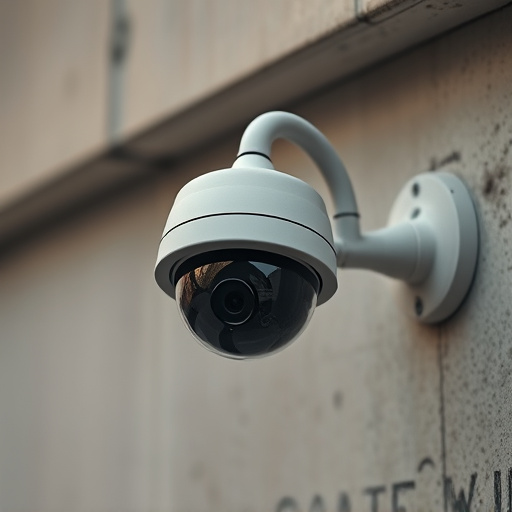Blinking LED fake security cameras offer retailers an affordable, effective way to boost store security without high installation or maintenance costs. With various types and placement strategies, these realistic-looking devices deter shoplifting and violent crimes by mimicking real camera activity. Retailers strategically place them throughout stores for a powerful deterrent effect, enhancing safety and customer satisfaction while maintaining transparency and legal compliance.
Mock security cameras, especially Blinking LED Fake Security Cameras, are transforming retail store safety. This article delves into their unexpected advantages, exploring how these realistic imitations enhance store safety while subtly improving customer experiences. We’ll guide you through various types and optimal placement strategies for maximum effectiveness. Furthermore, we’ll discuss legal considerations and best practices to ensure a secure and compliant implementation of mock surveillance equipment.
- Understanding the Benefits of Mock Security Cameras for Retail Stores
- Types and Placement Strategies for Blinking LED Fake Security Cameras
- Enhancing Store Safety and Customer Experience with Realistic Imitations
- Legal Considerations and Best Practices for Implementing Mock Surveillance Equipment
Understanding the Benefits of Mock Security Cameras for Retail Stores
Mock security cameras, or blinking LED fake security cameras, offer a cost-effective and effective solution for enhancing retail store security. Unlike real cameras, they don’t require extensive installation or ongoing maintenance costs, making them an attractive option for businesses looking to deter theft and vandalism without breaking the bank. By strategically placing these realistic-looking cameras around the store, retailers can create the illusion of heightened surveillance.
This simple yet powerful tactic can significantly discourage would-be thieves, leading to a reduction in shoplifting incidents. Moreover, the mere presence of mock security cameras can deter violent crimes and ensure a safer environment for both customers and staff. With their blinking lights mimicking real camera activity, these fake cameras provide a psychological barrier, encouraging honest behavior and promoting a sense of accountability among shoppers.
Types and Placement Strategies for Blinking LED Fake Security Cameras
Blinking LED Fake Security Cameras come in various types, each designed for specific needs and placements within retail stores. The most common types include fixed cameras, which mimic real security cameras with static positioning, ideal for high-traffic areas to deter shoplifters. Mobile or panning cameras simulate movement by rotating their lenses, making them perfect for broader surveillance needs. Some advanced models even feature infrared capabilities, enabling night vision and enhancing overall coverage.
Placement strategies for these cameras are equally diverse. High-visibility spots like entrances, exits, and merchandise-rich areas benefit from prominent camera positioning to deter potential thieves. Lowering the cameras slightly can create an illusion of enhanced technology while maintaining a realistic aesthetic. Wall-mounted or ceiling-suspended options offer versatility, allowing retailers to strategically place them based on store layout and security requirements. Additionally, grouping several fake cameras in different locations can further reinforce the impression of comprehensive surveillance, acting as a powerful psychological deterrent.
Enhancing Store Safety and Customer Experience with Realistic Imitations
Retail stores are constantly seeking ways to improve both their safety measures and customer experience, and one innovative solution gaining traction is the use of blinking LED fake security cameras. These realistic imitations serve as a powerful deterrent against potential theft and vandalism while also contributing to a more welcoming atmosphere for shoppers. By strategically placing these cameras throughout the store, retailers can create the illusion of heightened surveillance, thereby reducing opportunistic crimes.
Unlike traditional security systems that may be noticeable and intrusive, blinking LED fake security cameras blend seamlessly into their surroundings. Crafted with intricate details and high-quality materials, these fake cameras mimic real security equipment in every aspect, from the flashing red LED light to the camera lens and housing. This level of realism ensures that shoppers are less likely to feel constantly monitored, fostering a sense of comfort and encouraging a more enjoyable shopping experience.
Legal Considerations and Best Practices for Implementing Mock Surveillance Equipment
When implementing mock security cameras, or blinking LED fake security cameras, in retail stores, it’s crucial to stay within legal boundaries. While these devices are designed as deterrents and for visual deception, they must not violate privacy laws or mislead customers and staff. Using real-looking fakes can be acceptable if they’re clearly labeled as non-operational or simulated surveillance equipment. This practice is especially important in the retail sector, where transparency is key to building trust with customers.
Best practices include placing these cameras strategically, ensuring they mimic genuine camera positions, but always maintaining a clear indication that they are not active. Retailers should also conduct regular reviews of local laws and regulations regarding surveillance equipment to stay compliant. Additionally, training staff on the purpose and limitations of these devices can help manage expectations and prevent any confusion or false alarms.
Mock security cameras, particularly the Blinking LED Fake Security Cameras, offer a cost-effective and efficient way to enhance store safety while also improving customer experience. By strategically placing these realistic imitations, retail stores can deter theft, create a sense of security, and even encourage responsible behavior among patrons. However, it’s crucial to adhere to legal considerations and best practices when implementing mock surveillance equipment to ensure privacy rights are respected. With proper use, these cameras can serve as a powerful tool in the retail landscape.
